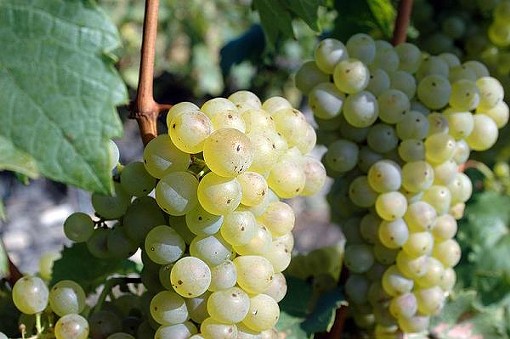Riesling is my favorite white grape variety, and if pressed, I'd probably choose it as my favorite grape overall (pinot noir being its only real competition). So it pains me that so many folks interested in wine seem to ignore it, if not deride or despise it. There are many misconceptions about riesling, and the German on many riesling labels acts as a further barrier. However, no other grape so clearly articulates where it is grown, which makes the effort not only worthwhile, but obligatory for the someone interested in exploring the concept of terroir.
The biggest issue with riesling is sweetness. Most rieslings have a not-insignificant amount of sugar in them, and this gets into the craw of people who have learned that only "dry" wines are "serious" and worthy of their attention. I've noticed that there is a large overlap between folks holding these beliefs and those who enjoy " dry" red wines that actually have a large amount of residual sugar in them as well. Try to keep an open mind, and I think you will be rewarded with a wonderful wine experience.
In riesling from Germany -- and, to a lesser extent, from Austria and the Alsace region of France -- the riesling grape has such a high level of acidity that some sugar is necessary to make a wine that tastes balanced to most people. There are "dry" riesling wines (labeled "Trocken"), but even these allow a bit of sugar to help achieve balance -- though the few I've sampled (the Germans love them, so not many bottles make it out of the country) were quite severe.
A well-made German riesling (we'll get to other countries in a future column) is a complex balancing act: There is ripe juicy fruit -- often peach or citrus -- but it frequently plays a supporting role to mineral and stone flavors. The massive acidity sharpens these flavors; in turn, it is smoothed and rounded by the touch of sweetness. An added bonus to these wines is their low levels of alcohol. Most German rieslings clock in between 7% and 11% alcohol.
It is the prominence of the rock flavors that makes German riesling so captivating to me. As one moves among the different regions of Germany, the mineral flavors change; with repeated tasting, you can recognize variations in these flavors even in vineyards that are right next to each other.
- Local St. Louis
- News
- Things to Do
- Arts & Culture
- Food & Drink
- Music
- Movies
- St. Louis in Pictures
- About Riverfront Times
- About Us
- Advertise
- Contact Us
- Jobs
- Big Lou Holdings, LLC
- Cincinnati CityBeat
- Louisville Leo Weekly
- Detroit Metro Times
- St. Louis Riverfront Times
- Sauce Magazine



